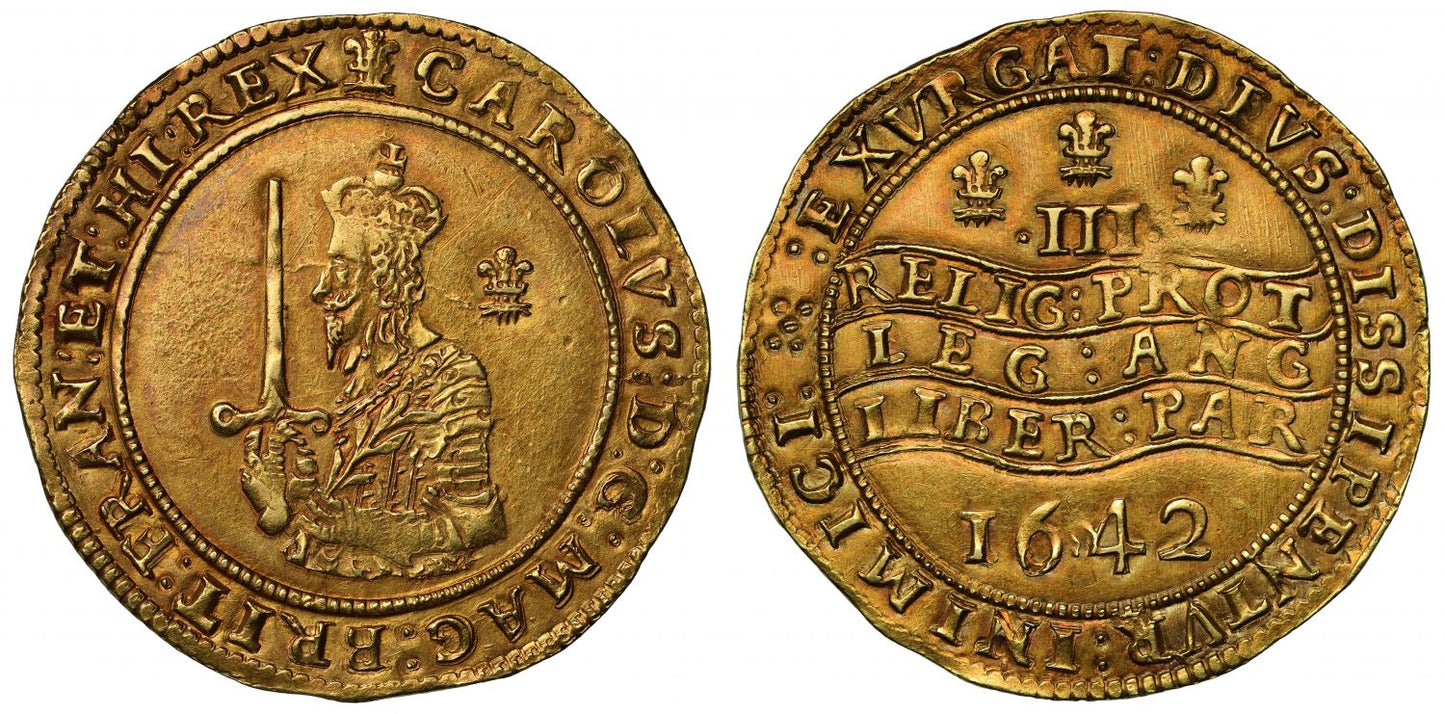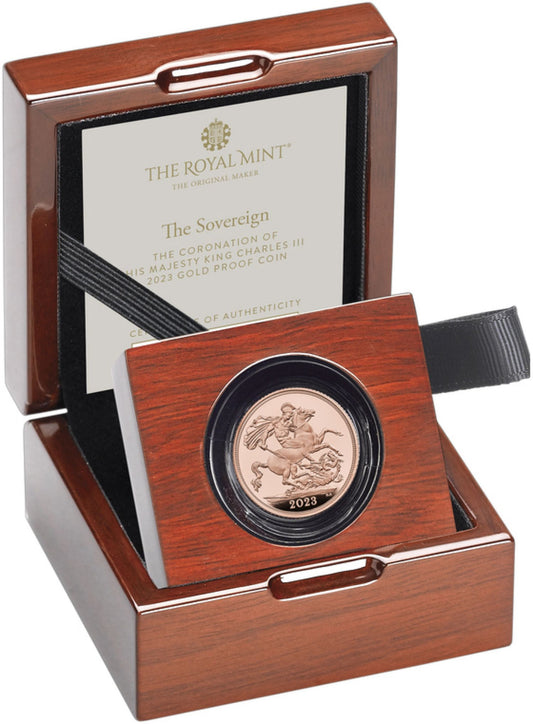FAQs
What makes a coin valuable?
I have coins to sell, what’s the next step?
How will my purchases be shipped?
What happens if I’m not entirely happy with my purchase?
Charles I 1642 Triple Unite, Oxford mint
Charles I (1625-49), gold Triple-Unite of Three Pounds, dated 1642, Oxford Mint, half-length crowned armoured figure of King left, holding sword and palm branch, Oxford plumes in field behind, all within beaded circle, Latin legend and outer toothed border surrounding, initial mark Oxford plumes, CAROLVS: D: G: MAG: BRIT: FRAN: ET: HI: REX, reverse, abbreviated Latin Declaration inscription in three wavy lines at centre, RELIG: PROT / LEG: ANG / LIBER: PAR, date below, three Oxford plumes over .III. value above, Latin legend commences upper left within beaded and toothed border surrounding, initial mark five pellets, :EXVRGAT: DEVS: DISSIPENTVR: INIMICI: weight 26.78g (Beresford-Jones dies III / S2; Schneider 286; N.2381; Brooker 832; S.2724). With eye-appealing copper-red toning and very crisp, slight weakness only in the striking on the highest points, with usual slight raised die flaws on obverse and two tiny circular flaws near plumes, with a great portrait of the King, about as made with die striation lines still apparent from original striking on reverse, practically extremely fine and very rare this well preserved.
The gold Triple Unite represents the largest hammered gold denomination ever produced in the English series of coinage at a face value of Three Pounds. Such coins were produced at a time of duress, when the King had moved his Capital from London after the Battle of Edgehill, to the Royalist Universities of the City of Oxford, where he made a state entrance on 29th October 1642. The King lived at Christ Church, with the Queen installed at Merton; the Royalist Parliament met in the Upper Schools and Great Convocation House; the Privy Council at Oriel; and the Mint worked at New Inn Hall from the 3rd January 1642/3. These magnificent gold coins were struck for only three dates, 1642, 1643 and 1644 with some variation as there are 24 different varieties of obverse and reverse across these three dates, plus an extremely rare 1642 piece struck in Shrewsbury. Today, it is estimated the 25 different combinations exist in a mere surviving sample of some 250 pieces.
When the Triple Unite was introduced as currency it was more than double the value of any previous English coin produced, and would have been seen as a magnificent piece of propaganda against the Puritan cause, to show that though the King had moved from London, Oxford was a rich alternative City. Perhaps the King was inspired by similar large extremely rare Scottish coins produced some 70 years earlier by his Father, King James VI of Scotland in 1575-6. The King had introduced the first regular newspaper printed in Oxford the "Mercurius Aulicus" from the 1st January 1642/3 (1642 old calendar style), and the introduction of the new Triple Unite as currency is featured in the edition produced around the 18th February 1642/3, and features a woodcut illustration of the new denomination (dies 1/S1 combination). This is thought to be the first ever illustration of a current coin of the realm in contemporary print. As the new year in the old calendar style commenced on the 25th March this means all the 1642 dated coins were produced in only a very limited time from mid-February to probably April at latest when 1643 dated pieces were no doubt produced. It seems the issue of this great coin ceased with the great fire of Oxford as reported in the same newspaper of 6th October 1644, as there are only three reverse types known of 1644.
Latin Legends:
The abbreviated obverse legend translates as "Charles, by the Grace of God, King of Great Britain, France and Ireland.
The abbreviated reverse Declaration translates as "The religion of the Protestants, the Laws of England, the Liberty of Parliament"
The outer reverse legend translates as "Let God arise and let his enemies be scattered"
PROVENANCE:
Ex Zurich Collection, Stacks of New York, October 1985, lot 1058 (sold for $11,550).
Ex Stacks of New York, 2nd December 1997, lot 1082.
Ex Spink Numismatic Circular, May 2000, item 2033.
FAQs
What makes a coin valuable?
I have coins to sell, what’s the next step?
How will my purchases be shipped?
What happens if I’m not entirely happy with my purchase?













